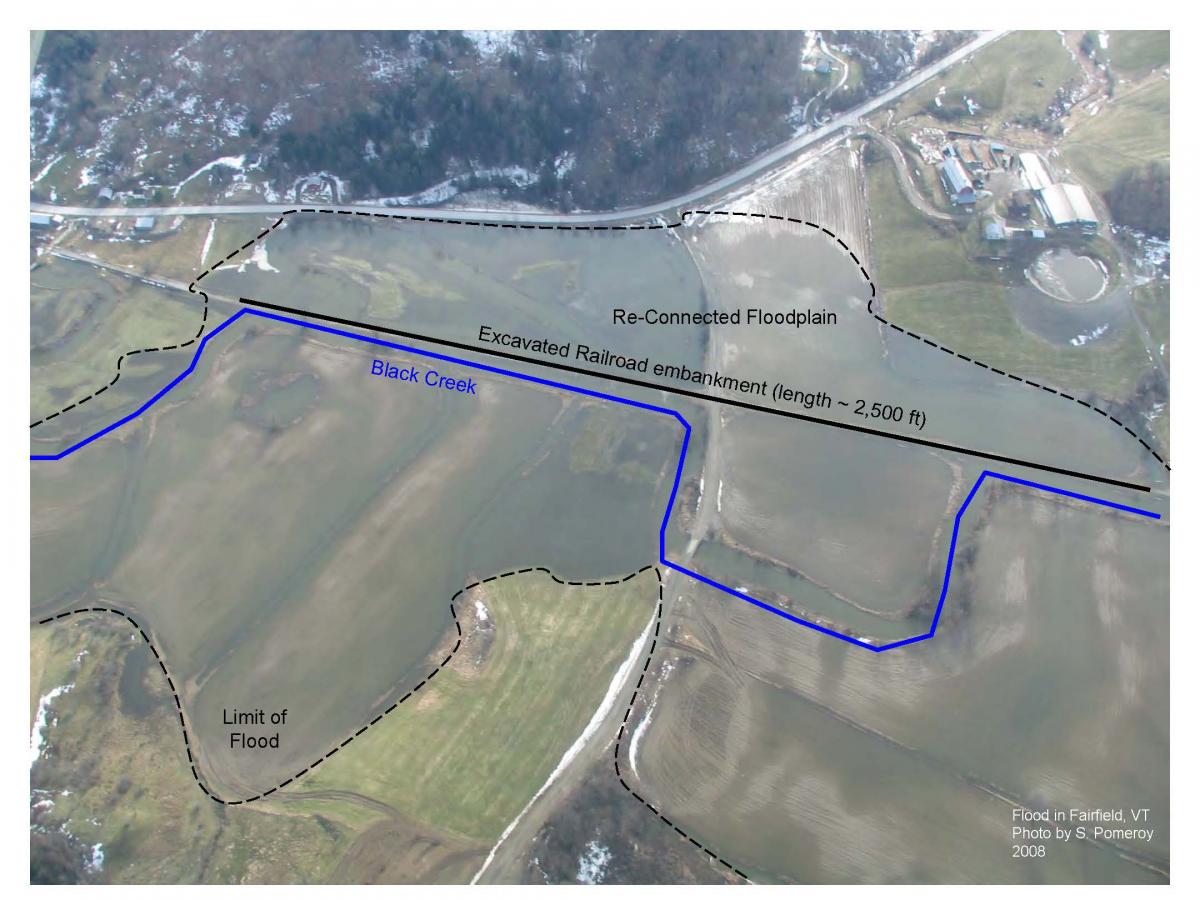
The Vermont Rivers Program promotes river restoration practices that aim to accommodate the dynamic nature of rivers and allow for change and natural channel stability (dynamic equilibrium) over time. Such restoration projects often focus on creating or enhancing the ability of the river to access its floodplain during a flood, enhancing riparian and channel boundary conditions through planting of natural woody riparian vegetation, and sometimes restoring in-channel features that allow for the creation and maintenance of natural stability.
Some examples of types of restoration projects that the Vermont Rivers Program promotes include:
- Floodplain reconnection
- Floodplain excavation
- Berm removal
- Riparian planting
- Grade control weirs (head-cut arrest)
- Flood chute activation
- Large wood addition
- Dam Removal
Restoration Project Case Study
The Lamoille Valley Rail-Trail Floodplain Restoration Project

A large floodplain restoration project was completed in 2008 in northern Vermont where approximately 6 miles of former railroad embankment was removed to reconnect more than 200 acres of historic floodplain. This project is a great example of an active river restoration project that achieves the goal of restoring dynamic equilibrium by allowing the river access to its floodplain. Please learn more about it at the following links.
Summary of Lamoille Valley Rail-Trail Floodplain Restoration Project
Published article about Lamoille River and Black Creek Floodplain Restoration
